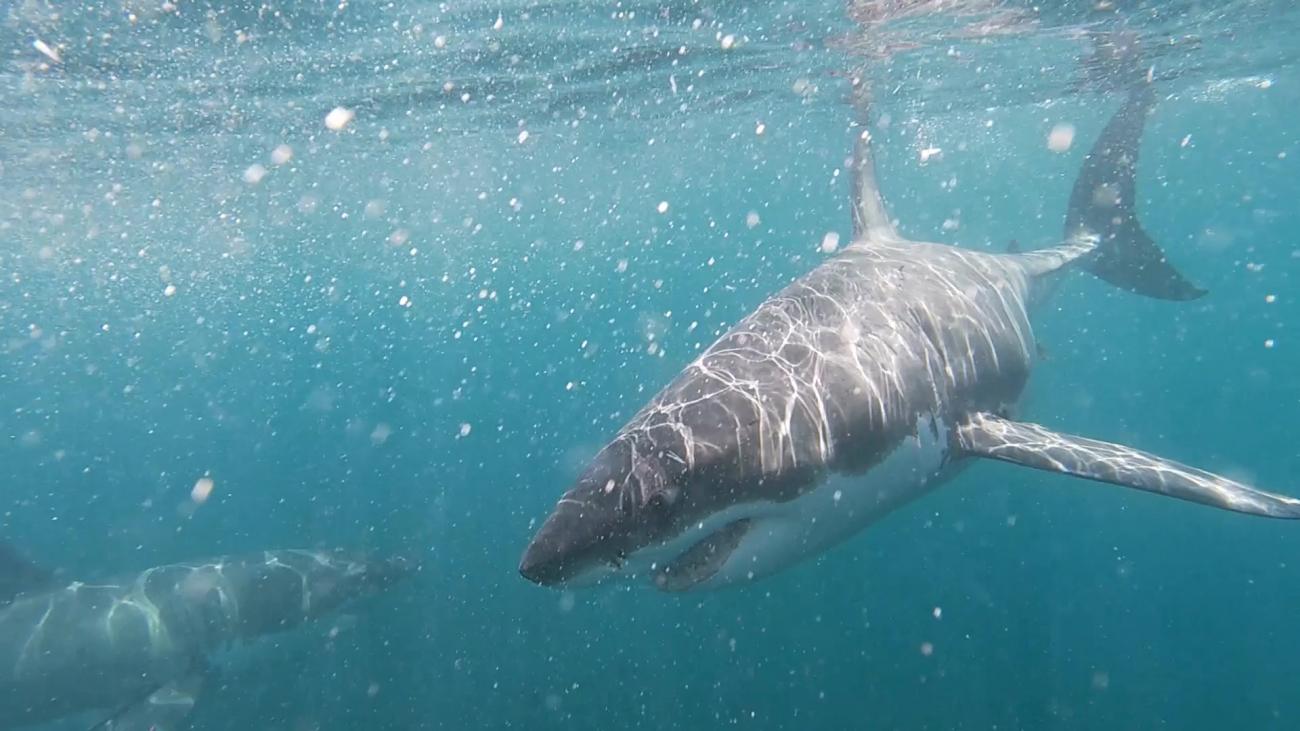About the Sharks
Who are we seeing out there?
So many names for one shark!
Great white Shark - Carcharodon carcharias - Mango Ururoa (Màori ), White pointers... have been fully protected in New Zealand since 1 April 2007. Despite this protection, many are killed every year by recreational or commercial fishing, with the estimated international numbers now under 3500.
For generations Great Whites have returned to the Northern TiTi Islands in the Foveaux Strait, and its clearly one of the world's hotspots for great white sharks to meet. The Department of Conservation have identified over 225 individuals that return to area, and we believe their are many more.
International CITES and New Zealand legislation that protect these Great Whites, unfortunately does not extend to protecting their special meeting places or habitat in this part of the country.
The New Zealand Department of Conservation has a history of working alongside New Zealand and international scientists to learn more about this species in the hope that this information will further aid conservation efforts.

White sharks are between 1-1.5 m long and 21-32 kg at birth. Females grow to at least 6.4 metres, while the males are no lightweights at 5.5 metres maximum length. Several large females estimated to be between 6.7 and 7 metres long have been landed, and while it is difficult to weigh such large animals two reportedly tipped the scales at a massive two and a half tonnes!
Great white sharks are apex predators - at the top of the food chain. Their diet includes a variety of bony fish, sharks, rays, penguins and marine mammals. In New Zealand a relatively large proportion of the diets of sharks over 2.5 metres long consists of New Zealand fur seals. White sharks also commonly scavenge whale carcasses.
Great white sharks can reach great speeds when in pursuit of prey and leap clear of the water. They also cover vast distances of ocean. A shark tagged in New Zealand travelled over 1000 kilometres in just one week.
Common sense dictates that any large shark should be treated with respect. As a general rule any shark over 1.8 m long, regardless of species, should be treated as potentially dangerous. Fortunately, shark attack, particularly one involving serious injury is very rare in New Zealand.
The Department of Conservation administers protection under the Wildlife Act 1953, and is the New Zealand CITES authority.

